Researchers use these methods to look for reptiles in the wild.
Coming up with the best ways to actually find reptiles and amphibians has been a challenging part of research and field herping. While each method has its positives and negatives, a single version has not been officially termed, “correct.” Here we discuss some of the methods used to survey for reptiles and amphibians, and how doing more than one is never a bad thing. Here, the more the merrier because time and time again, multiple methods prove to be more effective and reliable for research and general field herping; and that means finding cool animals. When you want to concentrate on a specific habitat or species, careful research should be done on both the species and local/state laws. It is also important to be familiar with any potentially dangerous wild animals (including, but not limit to, venomous snakes). Field guides are incredibly useful for this!
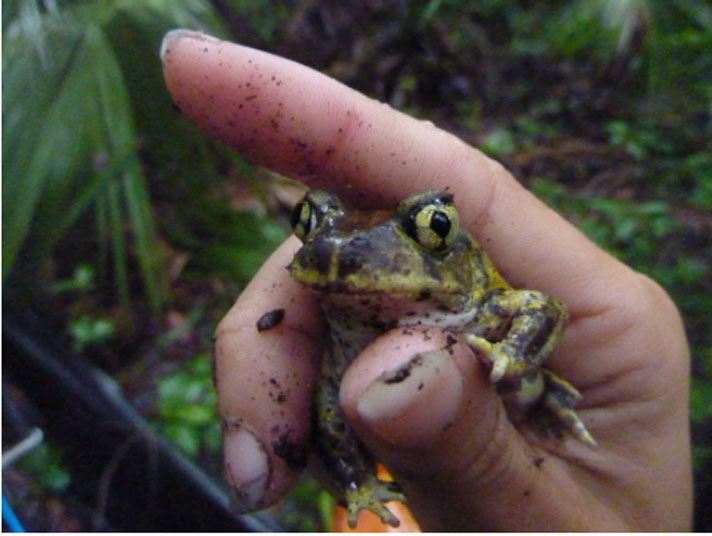
Rebekah Pettit
A spadefoot toad from a pitfall trap.
Based on published herp research and personal experience, the techniques described here are efficiently used to collect data on a variety of reptiles and amphibians. They are also perfectly suited for the fun herping adventures as a hobby. Here we define and discuss aquatic trappings, road cruising, foot surveying, dip netting, and pitfall trapping in regards to seeing herpetofauna.
4 Ways To Create A Backyard Herp Haven
It's important to think about the behavior of the species you are looking for. Are they nocturnal? Aquatic? Maybe both? This is a key point in planning for research, including for things like equipment, but it is also important for planning out a good day/night of herping for fun. Sometimes, reptiles and amphibians are the hardest to find, which can make it equally exhilarating as it is frustrating. Sometimes these highly secretive creatures have many unknown behaviors, which could require long term monitoring or multiple trips to investigate, identify, and find! Luckily, here are some known ways to eventually find them!
Aquatic Trapping For Reptiles
Aquatic trapping proves to be a successful method for reptile and amphibian findings. This method is especially useful with creatures who need water in some type of way and are very useful in herpetology studies.
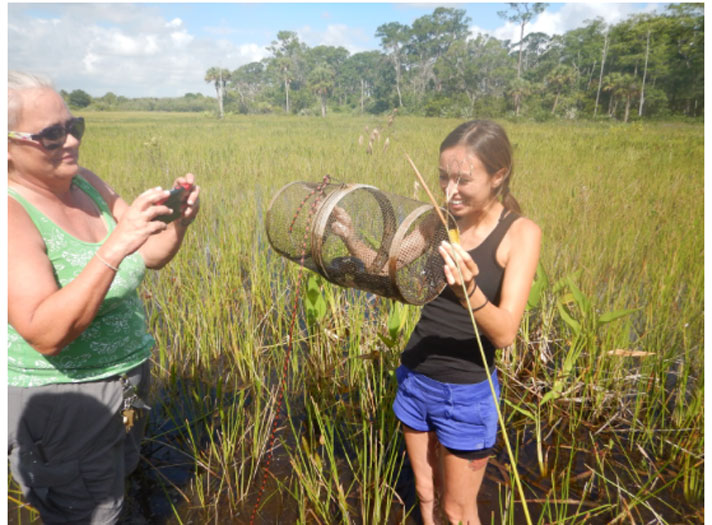
rebekah pettit
The author holding a gee trap.
There are two types of aquatic traps I have personally used including the smaller “Gees” traps, which have a single opening in one end and a funnel to prevent escape, and the larger Gee traps. If you decide to ever use these, always check local laws and regulations first and release anything you find unless part of a research team. Also use caution with these traps and make sure there is fresh air available for semi-aquatic species, leaving it in shallow areas only! Using this method I have come across so many amazing invertebrates, fish, frogs, tadpoles, salamanders, snakes and newts! Personally, the experience with larger traps in these reptile-rich areas, like the wetlands, was less successful, but that doesn’t mean they do not work. In many studies, they have been used successfully for larger reptiles. For me, it was during field work in a local state park, the large Gee trap was completely destroyed the next day from an alligator chewing through it like butter! Between the two methods, the smaller “Gees” traps proved to be more successful in capturing reptiles and amphibians, in my specific study. If trapping, always do so legally and responsibly, no one wants to get in trouble herping! Don’t leave the traps unattended for more than 24 hours, and of course, have fun! Whatever your reason, aquatic traps are a totally cool way to checkout the native reptiles and amphibians of your area.
Road Cruising For Reptiles
“Road cruising” is probably the most popular way to herp, and in some ways it really is the easiest! During dusk and later hours (sometimes called the “witching hour”) is the perfect time to road-cruise for reptiles and amphibians. This is a classic way to see why they got the name “cold-blooded.”
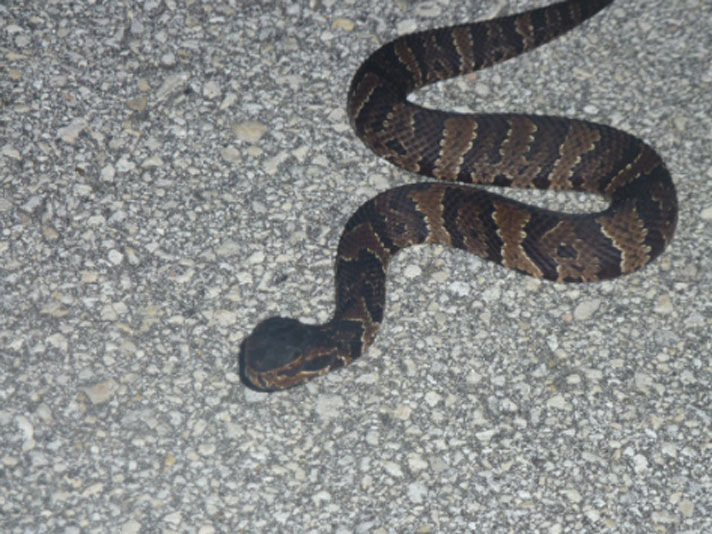
REBEKAH PETTIT
A water moccasin found during a road cruising expedition.
Take it slow, though…they depend on it! Because reptiles and amphibians can’t control their body temperature, they love to take advantage of the asphalt and concrete which stay warm into the colder nights. This method has proved over and over again the easiest way to see a variety of reptiles and amphibians. Sometimes they are getting warm, simply crossing the road, or you’re just at the right place at the right time. If the weather is clear, it’s very easy to spot herps when using bright headlights, slow speeds, and watchful eyes! It’s important to check the laws and rules of the area you plan to cruise, just so you can be extra prepared. Road surveying is a quick, affordable, fun and functional way to study and see reptiles and amphibians everywhere!
Foot Surveying For Reptiles
Foot surveys might require the most commitment, but it provides a certain reward! Getting out into nature and exploring it organically. This is a very common way to do herpetology research and is a good way to learn the native herps of your area. If looking for a specific species, this is a way to become extra personal with it and learn the place it calls home. This is also a very useful method when researching an understudied or elusive animal.
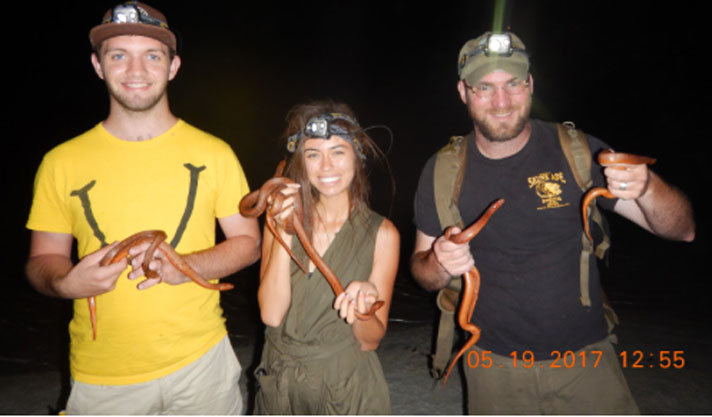
REBEKAH PETTIT
Foot hike survey for the mangrove salt marsh snake. From left: John Foote, Rebekah Pettit, Joshua Holbrook.
Because it is the natural way the animal behaves, it gives a more real experience for the herper. The other methods do not provide this, so get out there! This is a very important part of herpetology and is a true way anyone can admire, respect, and learn about reptiles and amphibians.
Dipnetting For Reptiles
Dipnetting is specifically for the amphibian enthusiast, but can be used for other groups as well, like fish, water snakes, and other reptiles. Since amphibians go through such an amazing transition, this method gives insight into the fragile balance of their unique homes. This habitat is a key way to know if there is a good population of frogs, salamanders, and toads around (depending on your area). While personally it has never provided a reptile, I’m sure it is possible to capture one if you are at the right place at the right time.
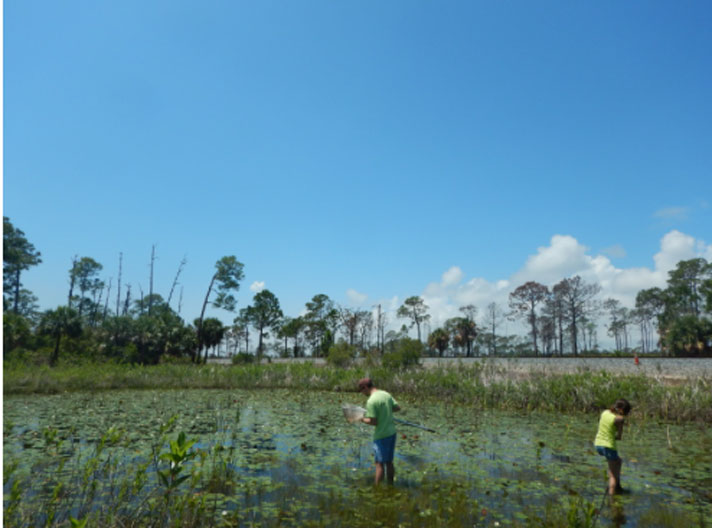
rebekah pettit
John Foote and Rebekah Pettit dipnetting an ephemeral pond.
Always be familiar with potentially venomous snake species of your area. During the right time, many tadpoles can be found this way, young salamanders too. Dragging the net softly through the bottom of a shallow water area, pull it up after a foot or two and see what you caught! These are also great areas to herp at night, because it’s pretty simple! Many frog and toad species will come to these areas to breed, so it’s not too hard to find them when they are also providing a free concert! Just listen and become familiarized with how they sound and look, because it’s usually loud. This is also used in Herpetology studies and has been very successful finding many species of amphibians/tadpoles.
Pitfall Trapping for Reptiles
Terrestrial pitfall trapping is a great method for collecting a range of animals in a wild, natural habitat. Using drift fences is a great way to learn what is in your own backyard or local state park. Always check permitting requirements before setting up pitfall traps.
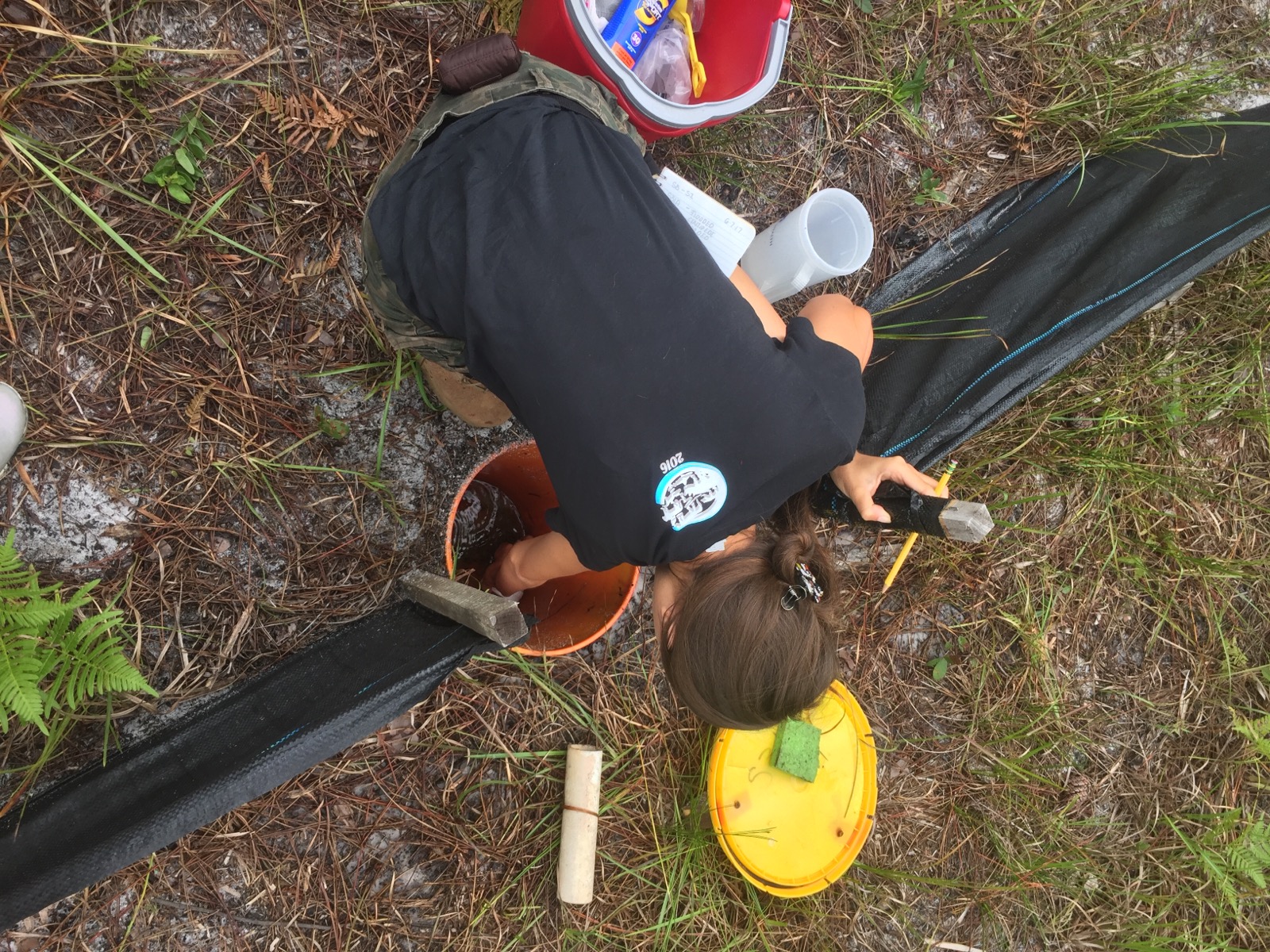
REBEKAH PETTIT
Always check permitting requirements before setting up pitfall traps.
These are typically large transects (distances) of fence set up with wood and a tarp. Between these fences are buckets dug into the ground typically filled with PVC pipe and a wet sponge. These traps should be checked daily while they are open. The buckets, when not in use, are covered tightly with lids so that nothing will fall in unattended. Inside the buckets include a PVC pipe in case of flooding (for floatation) and a wet sponge for days it gets to hot. This method has been used in multiple ecological studies and are an all around great way to herp. While open, these traps are a wonderful survey method for reptiles and amphibians that have provided me personally a variety of species!



